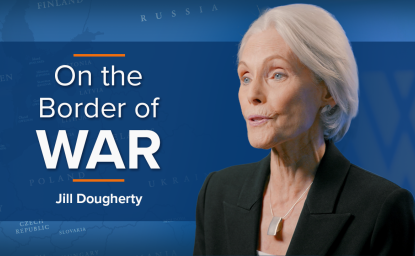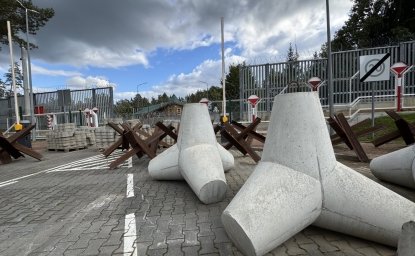(This story originally appeared in The Los Angeles Times on Sunday, June 21.)
How ironic. A regime that came to power through a brutal revolution, in a country suspected of secretly developing a nuclear weapon, is now facing its biggest challenge from peaceful civil disobedience.
The largely silent street demonstrations by day and haunting chants echoing across rooftops by night are not—so far—a counterrevolution.
That's not even their intention. What they are doing, however, is forcing Iran's Islamic regime to face the same ideals that have swept across five continents over the last quarter of a century—the supremacy of popular will, justice, accountability and the transparency of power.
The demonstrators may not succeed. Iran's "New Right"—the war-hardened second generation of leaders, who wear hats instead of turbans—still has the political power and the physical tools to contain the current confrontation. That could well mean a second (and final) term for President Mahmoud Ahmadinejad, and if it does, the theocracy may increasingly evolve into a thugocracy during the next four years.
But long term, the feisty election campaign and the post-election protests have given legitimacy to the core ideas of political change. It's all so central to what the United States wants to see happen throughout the Middle East. Yet it's also so Iranian.
For 14 centuries, Shiism has been about passionate belief, about sacrifices in the name of perceived injustice and challenges to leadership. These are the principles that stirred people to action when questionable election results were announced just two hours after the polls closed.
For a century, Iranians have been political trailblazers in the 57-nation Islamic bloc. During the 1905-1911 Constitutional Revolution, a powerful coalition of intelligentsia, bazaar merchants and clergy forced the Qajar dynasty to accept a constitution and Iran's first parliament. In 1953, the democratically elected National Front coalition of four parties led by Prime Minister Mohammed Mossadegh pushed constitutional democracy and forced the last Pahlavi shah to flee to Rome—until U.S. and British intelligence orchestrated a coup that put him back on the Peacock Throne. And in 1979, yet another coalition of bazaaris, clergy and intellectuals mobilized the streets to end dynastic rule that had prevailed for about 2,500 years.
So the angry energy unleashed this week from the northern Caspian coast to southern Shiraz is the natural sequel, spurred on by 21st century technology and the Internet. Each of the first three phases left indelible imprints on Iranian politics. The fourth will too.
The 1999 student protests failed because they involved only one sector of society; it was a body without a head or a strategy. But the current green-swathed uprising involves an emerging coalition that includes students and sanctions-strapped businessmen, taxi drivers and former presidents, civil servants and members of the national soccer team.
Key clergy have thrown in their turbans too. Ayatollah Hossein Ali Montazeri—the designated heir to the revolution's founder until his criticism of the regime's injustices in 1989—issued a virtual fatwa dismissing the election results and urging Iranians to continue "reclaiming their dues" in calm protests. He also warned security forces not to follow orders that would eventually condemn them "before God."
"Today, censorship and cutting telecommunication lines cannot hide the truth," Montazeri wrote.
Senior clerics in the holy city of Qom, many of whom never favored an Islamic republic for fear its flaws would taint Islam, have also failed to embrace the election outcome. Even the brother of Supreme Leader Ayatollah Ali Khamenei, Hadi Khamenei, himself a cleric and former member of parliament, urged that an impartial committee probe the election results and provide a full public accounting. As the coalition expands, the stakes are also widening well beyond who ends up as president. The two faces of the Islamic Republic—Ali Khamenei and former Prime Minister Mir-Hossein Mousavi—are now pitted against each other. The religious ideologue against the lay technocrat. The two men embody the central debate that has increasingly obsessed Tehran over the last three decades: Is the Islamic Republic first and foremost Islamic or a republic? In other words, does God's law or man's law have the last word?
The debate was once beyond public reach. No longer. Unless Khamenei can satisfy the protesters, all the brutal tools of 150,000 Revolutionary Guards and 300,000 paramilitary Basij will be unable to sustain his legitimacy.
At the same time, however, hundreds of thousands of Iranians have not taken to the streets to reject the current constitution but rather to demand that the individual rights it guarantees are enforced.
Past international crises are now being invoked to forecast Iran's fate: Mousavi supporters fear Iran's security forces will reenact China's crackdown in Tiananmen Square. Regime supporters compare Mousavi to former Soviet President Mikhail Gorbachev, fearing the undoing of their own revolution if he prevails.
But whatever happens in Iran will be distinctly Iranian in style and outcome. The movement has already invoked Shiite symbolism. Mourning is traditionally marked in commemorations on the third, seventh and 40th days after a death, a cycle also used to galvanize greater public outrage when the shah's forces killed protesters in 1978. The commemorations often led to new clashes and more deaths—and then volatile new cycles of mourning.
It was no accident that Mousavi called for the mass demonstration Thursday to mourn the dead killed on Monday. And the cycle is only beginning. The 40th-day commemorations are traditionally most important.
The stunning protests in this fourth phase of Iran's century-long political journey will change the country further. The only question is how long it will take.
Related Links


